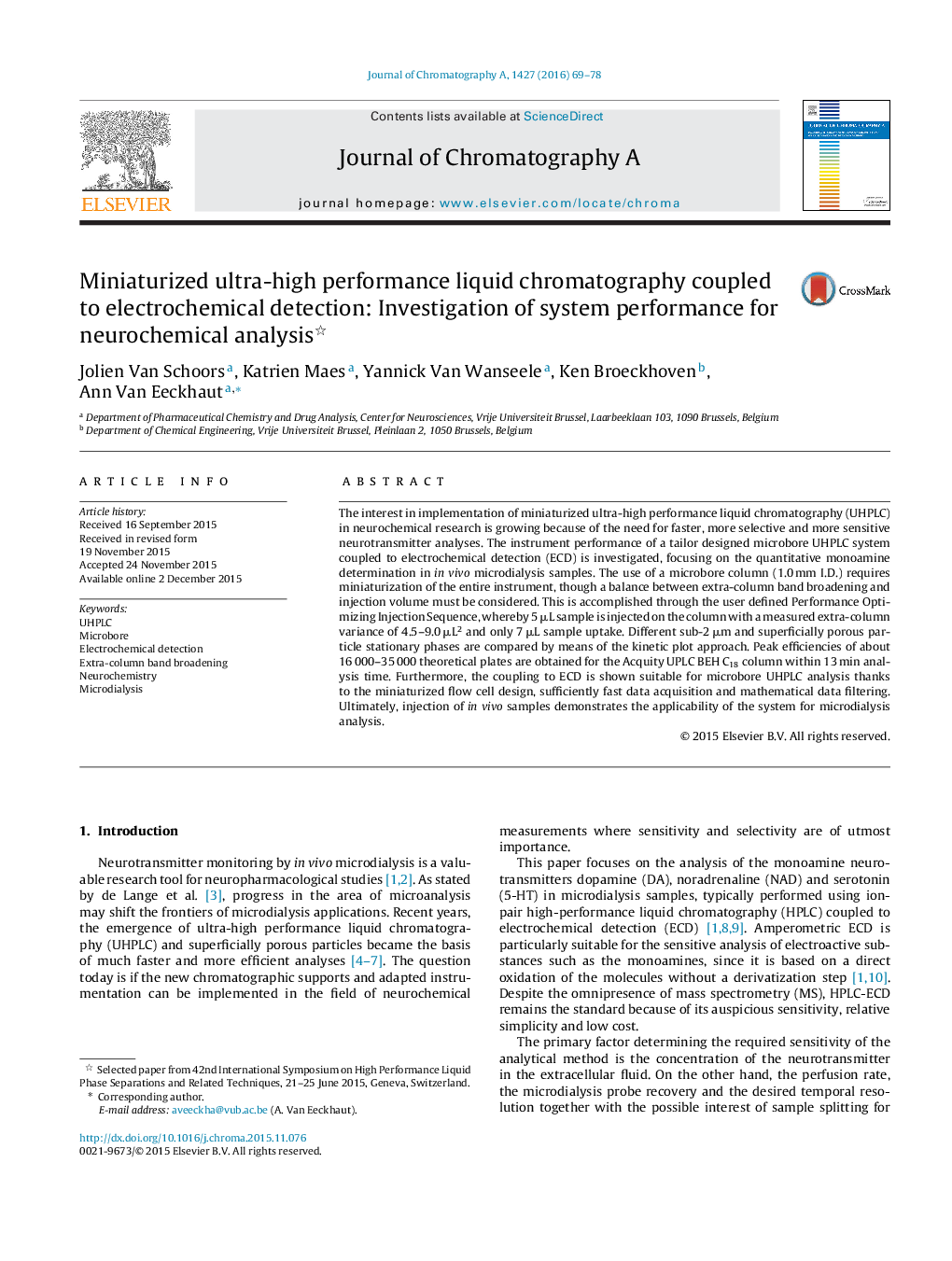| Article ID | Journal | Published Year | Pages | File Type |
|---|---|---|---|---|
| 1198599 | Journal of Chromatography A | 2016 | 10 Pages |
•Microbore UHPLC-ECD is used for monoamine analysis in in vivo microdialysis samples.•The performance of a tailor designed miniaturized UHPLC-ECD system is investigated.•POISe offers a balance between mass sensitivity and extra-column variance.•Sub-2 μm and superficially porous particle columns are compared by kinetic plots.•Coupling to ECD is suitable due to miniaturization and mathematical filtering.
The interest in implementation of miniaturized ultra-high performance liquid chromatography (UHPLC) in neurochemical research is growing because of the need for faster, more selective and more sensitive neurotransmitter analyses. The instrument performance of a tailor designed microbore UHPLC system coupled to electrochemical detection (ECD) is investigated, focusing on the quantitative monoamine determination in in vivo microdialysis samples. The use of a microbore column (1.0 mm I.D.) requires miniaturization of the entire instrument, though a balance between extra-column band broadening and injection volume must be considered. This is accomplished through the user defined Performance Optimizing Injection Sequence, whereby 5 μL sample is injected on the column with a measured extra-column variance of 4.5–9.0 μL2 and only 7 μL sample uptake. Different sub-2 μm and superficially porous particle stationary phases are compared by means of the kinetic plot approach. Peak efficiencies of about 16 000–35 000 theoretical plates are obtained for the Acquity UPLC BEH C18 column within 13 min analysis time. Furthermore, the coupling to ECD is shown suitable for microbore UHPLC analysis thanks to the miniaturized flow cell design, sufficiently fast data acquisition and mathematical data filtering. Ultimately, injection of in vivo samples demonstrates the applicability of the system for microdialysis analysis.
